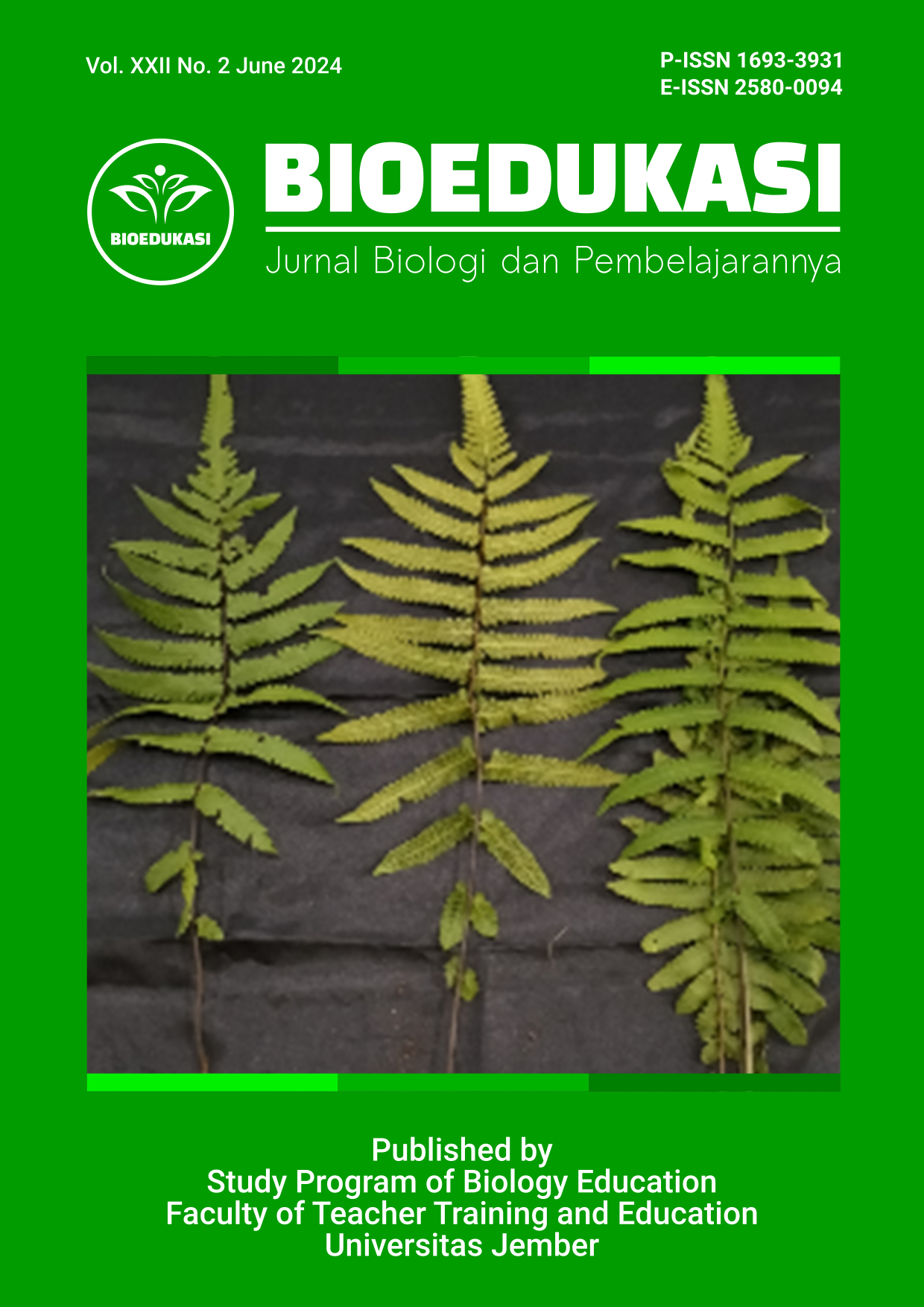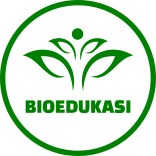Identification of Chemical Compounds of Cymbopogon Nardus (L.) Rendle and Ocimum Basilicum (L.) using Gas Chromatography-Mass Spectrometry (GC-MS)
DOI:
https://doi.org/10.19184/bioedu.v22i2.48009Keywords:
Basil, Chemical Compunds, Citronela, Essential oil GC-MSAbstract
Citronella essential oil (Cymbopogon nardus (L.) and basil leaf essential oil (Ocimum basilicum (L.) offer various benefits, including antibacterial properties. This study aims to identify the chemical compounds present in these oils obtained through local distillation at PT Syailendra Bumi Investama in Wonorejo Village, Gondangrejo, Karanganyar, Central Java. Gas Chromatography-Mass Spectrometry (GC-MS) analysis was conducted at the BRIN (National Innovation Research Agency) in Serpong, South Tangerang, Banten, to characterize citronella essensial oil and basil essential oil. The findings indicate that citronella essential oil meets the criteria of SNI 06-3953-1995, with three compounds showing significant concentrations: Geraniol (26.49%), citronellol (14.53%), and citronellal (10.95%). Similarly, research on basil leaf essential oil conforms to ISO 11043 - 1998 standards, revealing high concentrations of two compounds: Estragole (55.80%) and linalool (22.35%).
Downloads
References
Anwar, Y., Ningtiyas, N. A., & Simanjuntak, P. (2020). Isolation of Citronellal from Cymbopogon nardus (L) Rendle and its Activity Test as a Burn Healing in Mice. Current Research on Biosciences and Biotechnology, 2(1), 105–108. https://doi.org/10.5614/crbb.2020.2.1/nodz4501
Batista, Pinheiro, F., et all. (2023). Comparative antimicrobial potential of Ocimum basilicum essential oil, estragole and estragole/β-cyclodextrin complex in an infection model on adult zebrafish. Carbohydrate Polymer Technologies and Applications. DOI : https://doi.org/10.1016/j.carpta.2023.100385
Chauhan, A. (2014). GC-MS Technique and its Analytical Applications in Science and Technology. Journal of Analytical & Bioanalytical Techniques, 5(6). https://doi.org/10.4172/2155-9872.1000222
Depkes RI 2001, Inventaris Tanaman Obat Indonesia (1), Jilid 2, Jakarta: Departemen Kesehatan RI.
Hakim, L. (2015). Rempah dan Herba Kebun-Pekarangan Rumah Masyarakat: Keragaman, Sumber Fitofarmaka dan Wisata Kesehatan-kebugaran, Yogyakarta : IKAPI
Kumala, S., Anwar, Y., Dhiaul Iftitah, E., & Simanjuntak, P. (2019). Isolasi dan Identifi kasi Senyawa Geraniol dari Minyak Atsiri Tanaman Sereh Wangi Cymbopogon nardus (L) Rendle (Isolation and Identifi cation of Geraniol Compounds from The Essential Oil of Cymbopogon nardus (L) Rendle). Jurnal Ilmu Kefarmasian Indonesia, 17(2), 183–188. https://doi.org/10.35814/jifi.v17i2.746
Munda, S., N. Sarma, M. Lal. 2020. GxE interaction of 72 accessions with three year evaluation of Cymbopogon winterianus Jowitt. using regression coefficient and Additive Main effects and Multiplicative Interaction model (AMMI). Industrial Crops & Products Journal 146: 112169. DOI: https://doi.org/10.1016/j.indcrop.2020.112169.
M. Maputo 2021, Harumnya Essential Oil Indonesia Hingga ke Mancanegara, Jakarta : Kementrian Luar RI.
M. Verillo, V. Cozzolino, Rr. Spaccini et al, 2021, ‘Humic substances from green compost increase bioactivity and antibacterial properties of essential oils in Basil leaves’, Chemical and Biological Technologies in Agriculture. DOI: https://doi.org/10.1186/s40538-021-00226-7
M. Pejcic, Z, Stojanovic Rradic, & M. Gencic et al. 2020, ‘Anti-virulence potential of basil and sage essential oils: Inhibition of biofilm formation, motility and pyocyanin production of Pseudomonas aeruginosa isolates’, Food and Chemical Toxicology. DOI: https://doi.org/10.1016/j.fct.2020.111431
Sari, M. T., Anwar, Y., & Putra, A. M. J. (2023). Identification Chemical Compounds of Cymbopogon nardus (L.) Rendle Essential Oil Using Gas Chromatography and Mass Spectrophotometry. Bioedukasi: Jurnal Biologi dan Pembelajarannya 21(2),128-131. https://doi.org/10.19184/bioedu.v2li2. 39692
Standard, ISO, (1998). Oil of basil, methyl chavicol type (Ocimum basilicum L.). 1998. https://standards.iteh.ai/catalog/standards/sist/bc0c2002-f1a8-4c0a-b889-
Sukandar, D., Sulaswatty, A., & Hamidi, I. (2022). Profil Senyawa Kimia Minyak Atsiri Sereh Wangi (Cymbopogon nardus L.) Hasil Hidrodistilasi dengan Optimasi Perlakuan Awal Sonikasi. ALCHEMY Jurnal Penelitian Kimia, 18(2), 221. https://doi.org/10.20961/alchemy.18.2.60007.221-233
Tanrisannah, T, Febryanti, A, & Chadijah, S. 2023, ‘Ekstraksi Minyak Daun Kemangi (Occmum basilicum L.) Menggunakan Metode Microwave Assisted Hydrodistillation’, Jurnal Keteknikan Pertanian Tropis Dan Biosistem, 11(3), 296–304. https://doi.org/10.21776/ub.jkptb.2023.011.03.07
Tisserand R, Young R, 2014, Essential Oil Safety, 2nd edition. London: Churchill Livingstone
Wijayati, N., Pratiwi, D., Wirasti, H., & Mursiti, S. (2023). Minyak Serai Wangi Dan Produk Derivatnya. Bookchapter Alam Universitas Negeri Semarang, 3, 49–83. https://doi.org/10.15294/ka.v1i3.149






